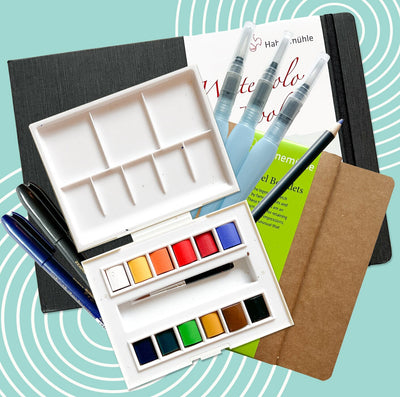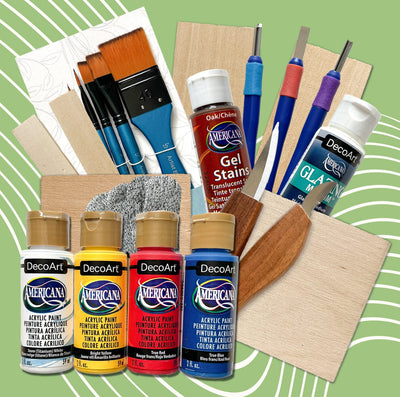Anyone who has started their drawing careers as children with Crayola colored pencils, probably has a fondness for the control and detail they have when using colored pencils to draw. Still, many people are surprised to find that drawing with colored pencils has become a fine art with the exquisite execution to rival painting and sculpture. Colored pencil drawings focus on similar shade and light considerations that dominate watercolor, while also using the shading a blending techniques of dry media.
When buying artist-grade colored pencils, you’ll probably hear reviews about some colored pencils being more waxy while others are more oily. The softness of the core also comes up frequently. So what exactly is inside a colored pencil? Colored pencils have either wax- or oil-based cores, containing various amounts of fine pigmentation and binding agents. Much of the popularity of colored pencils has to do with their portability. As a dry medium, they are easy to pack in a daily bag, or a suitcase for longer trips, without worrying about leakage, damage, and spoilage.
Just like any colored medium, high grade colored pencils are highly mixable, you so you can make a full spectrum of colors from layering a 12-pc set. However, to decrease the labor and wear on the paper involved in mixing colors, most colored pencil artists have a wide range of colors and always stock those particular shades that they know to be their favorites.
Still not sure about this rising artform? You’ll just have to check out the amazing artworks below.
1. Anne Kullberg’s “Broken Rules”

Most of Kullberg’s pencil drawings feature people and faces in a way that evokes a sense of emotional atmosphere. The clarity of “Broken Rules” makes it look deceptively simple. However, Kullberg’s meticulous detail can be seen in the lace at the bottom of the dress and the photo-perfect shading. The clean blue shading and blending of the background sets the mood, while also creating a clean space from which the viewer can focus on the figure at the edge of the scene.
2. Marco Mazzoni’s “Ambition”

Marco Mazzoni combines surrealism with realistic detail in illustrations that frequently depict the body, animals, and floral arabesques. He uses a combination of charcoal, graphite, and colored pencils to bring out a wide variety of moods and atmospheres in his pieces. Mazzoni demonstrates the ability to draw with realistic detail, but uses blending and shading to manipulate the tones of his artwork. In “Ambition” the many colors that are blended into the figure’s skin become signals of skin that is lived-in and has seen the beauty and vulnerability of existence.
3. Cecile Baird’s “Tear Jerker”

One of the appeals of colored pencil drawings is the added control that it can give the artist. This control and ability to develop a detailed piece often leads colored pencil artists to focus on portraits, but Cecile Baird’s outstanding pieces often have more botanical themes including this depiction of a red onion called “Tear Jerker.” Baird’s particular prowess is in her lighting choices, and her ability or organize her compositions, based on realistic light sources. The luminosity of the onion’s white flesh, in this case, shows a unique ability to capture reflection and texture.
4. Anna Hammer’s “Speak No Evil”

The versatility of colored pencils makes them an operative medium for developing contrastive textures. In the piece “Speak No Evil,” Anna Hammer uses lighting contrasts and careful textural details to create a balanced portrait. While the eyes are drawn to the negative space in the portrait, as well as the highly-detailed lace gloves, the blending in the folds of the figure’s blouse show the colored pencil’s exquisite ability to mimic similar effects as paints might have. The simplified look of this portrait shows a clean and clear use of blending and shading with colored pencils.
5. Art Venti’s

Art Venti draws large colored pencil surreal, non-representational artworks with the feel of otherworldly landscapes. In “Thoughts Above the Trees,” Art Venti builds dimension and atmosphere in a large piece that captures an inner landscape with mood and feeling. The flexible forms in Venti’s artwork shows the ability to develop movement, flow, and balance with colored pencil pigments. Venti’s work also demonstrates exquisite blending and light distribution.
If the works of the colored pencil masters above are inspiring to you, remember that colored pencils are among the most versatile media that you can take with you just about anywhere.
Colored pencils can help you accomplish any kind of image you want to make, whether it’s a portrait or a luminescent landscape. Both blendable and layerable, the key to a detailed colored pencil drawing is to keep developing the piece, until is shows texture, shading, and dimension.


